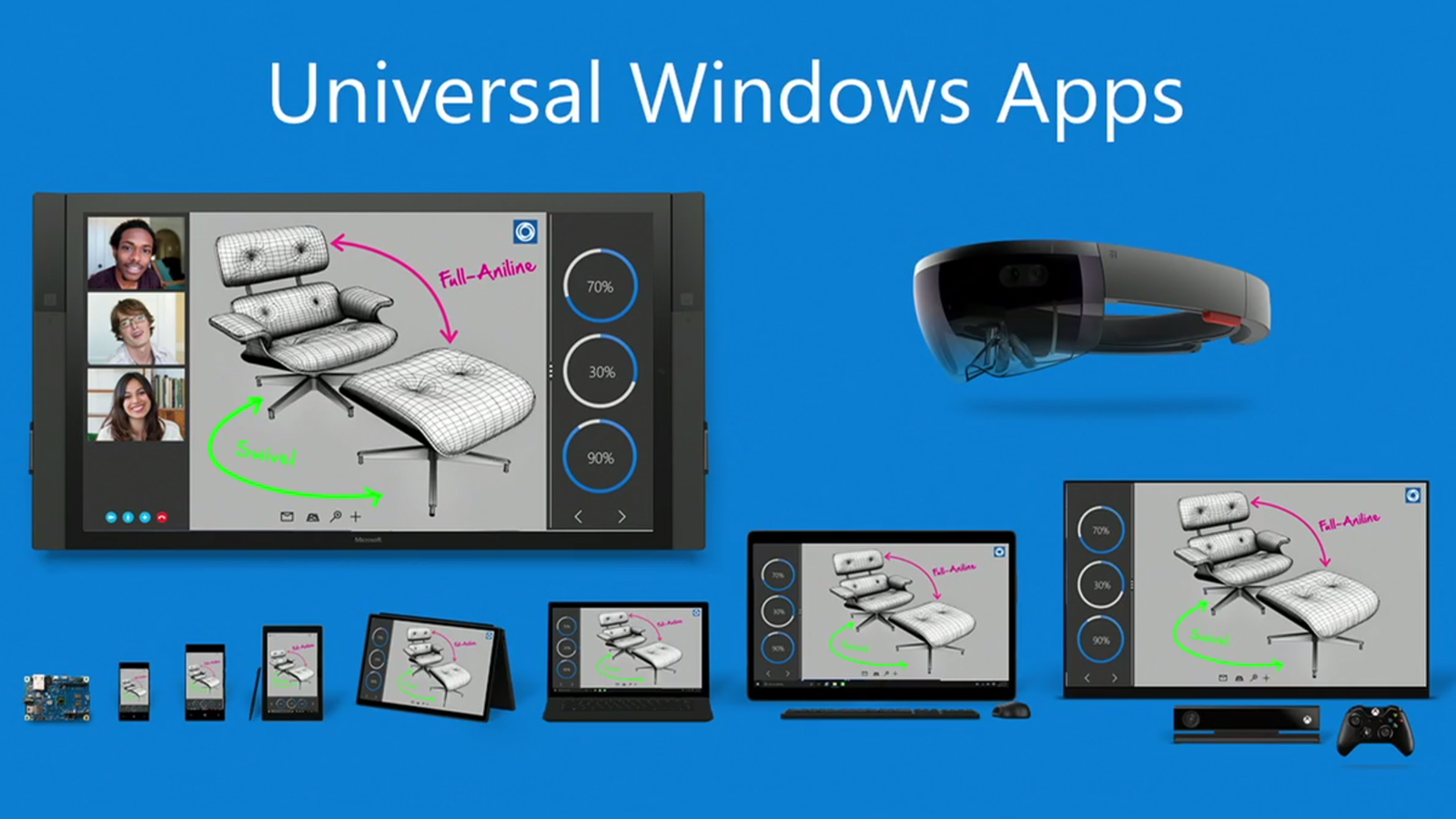How Microsoft is redefining itself with a new direction for Windows
Windows as you know it is about to change…
The strategy that Microsoft is employing with Windows 10 is, whether the firm intended it or not, genius. Soon, almost everything within the ecosystem will be compatible with everything else, a dream few technology companies can successfully realise.
Windows phones will become useful just by virtue of the fact that software written for Windows 10 can work on them. Microsoft demoed Office 2016 on both a desktop and a phone and it was virtually identical. On iOS, the iWork suite look similar on mobile and desktop but do not share the same universal underpinnings. If the company realises its one billion device goal, Microsoft will be onto a winner.
Many pundits, myself included, have decried Microsoft over the past few years as a company that is way behind its peers – Google, Amazon, Apple – but Build 2015 proves exactly the opposite: the strategy with Windows 10 will merge all facets of the company under one roof, increasing the desirability of Windows phones and potentially inventing the future with HoloLens.

Windows of the future
There are, of course, barriers to this bright future. Having a great idea doesn't automatically make it successful, as Windows 8 proved with the operating system's way-before-its-time design and ideas that have subsequently been rolled back in Windows 10, as the world wasn't quite ready for an all-touchscreen computing experience.
Fundamentally, even introducing an element of mobile into Windows is going to be a radical change. The two operating systems – Windows 8.1 and Windows Phone 8.1 – have shared a similar design and a code base but have never actually merged into one, despite the obvious benefits. That has changed and now Microsoft can reap those benefits and, wonderfully for users, the basic ways that they interact with Windows won't change – or, at least, not as radically as they did with Windows 8.
So what will the Windows of the future look like? The short answer is that it will likely look more and more like one unified operating system, just as Microsoft increasingly looks more and more like a unified company that is happy to work more expansively both internally and externally.
It's impossible to underplay the positive influence that Satya Nadella has had on the company and its set of values and ethos. There is no more marauding, cutthroat Microsoft of the 1990s and early 2000s, there is instead a company that is at peace with itself and, as a result, the quality of its products has improved exponentially. Windows will likely look the same visually but the applications and support will increase exponentially as Windows phones become a 'thing' and HoloLens reinvents how we use a computer. For once, Microsoft and Windows are changing for the better.
Sign up to the TechRadar Pro newsletter to get all the top news, opinion, features and guidance your business needs to succeed!
Max Slater-Robins has been writing about technology for nearly a decade at various outlets, covering the rise of the technology giants, trends in enterprise and SaaS companies, and much more besides. Originally from Suffolk, he currently lives in London and likes a good night out and walks in the countryside.